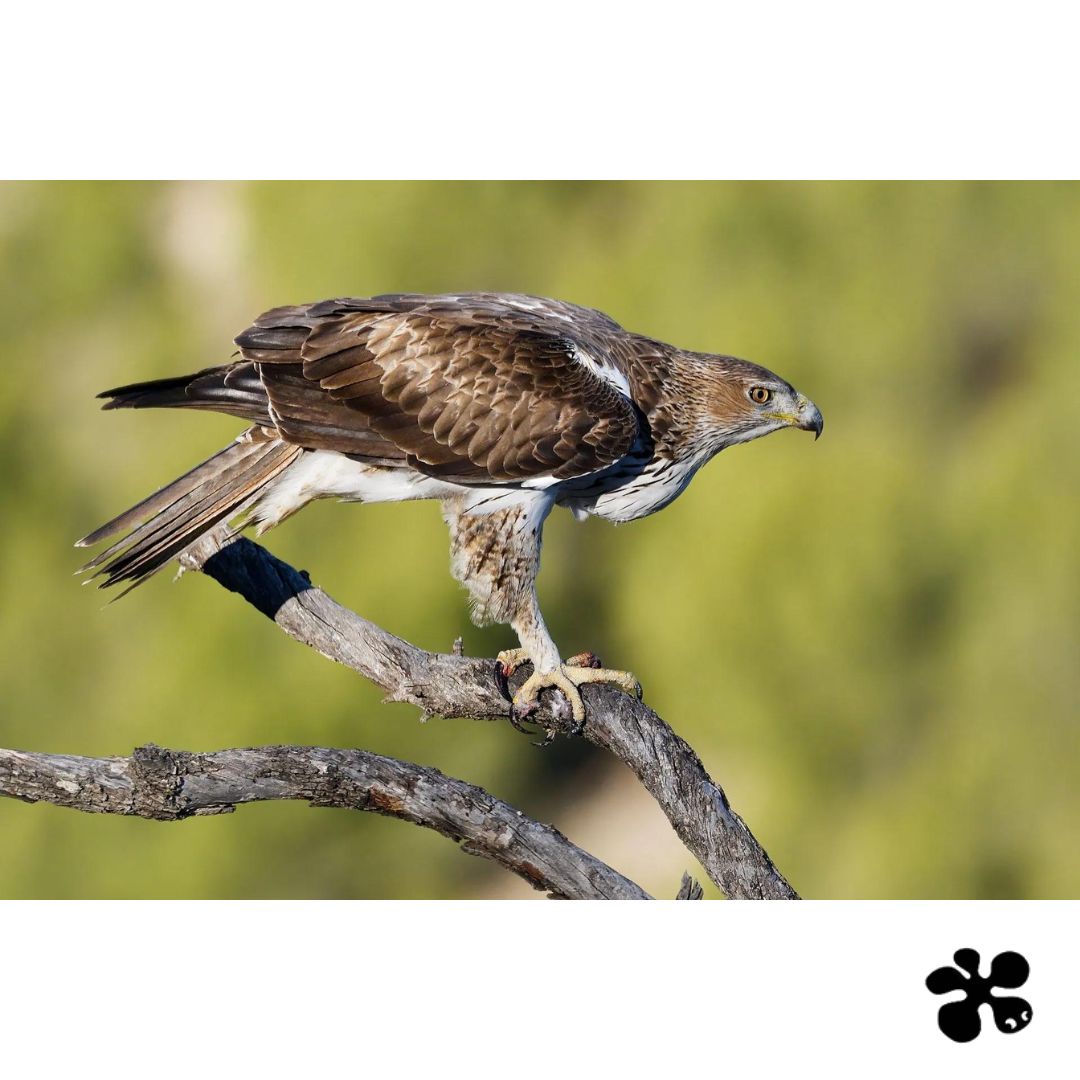The first Europeans facilitated the establishment of the Bonelli’s Eagle in the Mediterranean 50,000 years ago
A study led by the University of Granada and involving Joan Real and Antonio Hernández-Matías shows that our predecessors modified the relationship between the Cuban eagles and their great competitors, the golden eagles
Paradoxically, today human activity compromises the future of the Bonelli’s eagle among us
Catalan Spanish and Portuguese scientists, led by the University of Granada, have unraveled the ancestral history of one of the most iconic birds of prey in the current Mediterranean fauna, the Bonelli's eagle (Aquila fasciata).
The study, published in the prestigious scientific journal People and Nature, integrates arguments from various disciplines such as paleontology, genetics, and ecology to answer questions about when the Bonelli's eagle, a species primarily distributed in tropical and subtropical regions, colonized the Mediterranean basin and why.
As Marcos Moleón, professor at the Department of Zoology at UGR and first author of the article, explains, "the Bonelli's eagle is a 'recent arrival' in Europe. This species likely began to establish in the Mediterranean basin no more than 50,000 years ago, whereas others, like the golden eagle (A. chrysaetos), have been present here since much earlier, as evidenced by fossil records".
According to the spatial analyses conducted in the study, the Bonelli's eagle, unlike the golden eagle, is heavily disadvantaged during periods of cold climate. "During the last glacial period, the Bonelli's eagle could only find refuge in the warm coastal areas, which is precisely where its oldest fossils have been found," Moleón points out. Genetic analyses confirmed that, around the last glacial maximum, the Mediterranean population of Bonelli's eagles must have consisted of only a few individuals. This ancestral population of Bonelli's eagles thrived as temperatures in the Mediterranean basin rose and the human population grew and became sedentary.
However, as Moleón points out, "once we've answered the 'when,' we are faced with the inevitable question of why the Bonelli's eagle began to establish in the Mediterranean during such a climatically challenging period. Furthermore, why did it establish itself precisely in the last glacial cycle and not before?"
The role of the first Europeans
According to Moleón, "after testing several alternative hypotheses, all the pieces of the puzzle indicated that the early European settlers of our species (Homo sapiens) played a fundamental role."
For this study, the most comprehensive information available on the competitive interactions between the Bonelli's eagle and the golden eagle was collected and analyzed. This allowed to confirm that, in this relationship, the golden eagle is the 'dominant' species and the Bonelli's eagle is the 'subordinate' species. Thus, the results showed that the Bonelli's eagle can only survive in those areas where the golden eagle is scarce, which mainly occurs in highly humanized areas.
"Furthermore," Moleón points out, "our mathematical models indicated that if we were able to eliminate all pairs of golden eagles in climatically favorable areas, we could expect a significant increase in the number of Bonelli's eagle pairs, but not vice versa. It is also known that golden eagles can kill Bonelli's eagles and usurp their territories, something that does not happen in reverse".
It is worth noting that the golden eagle is less tolerant towards humans than the Bonelli's eagle. The authors hypothesize that, with the arrival of the first anatomically modern humans in Europe, some of the golden eagle territories closer to human settlements were abandoned, and these 'vacant' territories began to be occupied by Bonelli's eagles from the Middle East. "In short," Moleón points out, "the Bonelli's eagle could not have established in the Mediterranean prior to the arrival of the first Homo sapiens because the competitive pressure exerted by the golden eagle and other species would have been 'too much' at that time".
¿Living near or far from humans?
That humans are capable of modifying species distribution is nothing new. The novelty of this study lies in revealing a mechanism, called 'human-mediated competitive release', through which our species, including our ancestors, could indirectly modify the distribution of other species, including 'long-lived' ones. "Understanding what we observe in nature today often requires looking to the past," notes Moleón.
According to Joan Real,the evolution of landscapes cannot be separated from Biodiversity or from the human footprint: "Many of the aspects that were traditionally considered pristine already had the human footprint. This is particularly evident in the Mediterranean basin, where many of the landscapes, ecological processes and species are the result of this interaction.”
However, the advantage that it once meant for the bald eagle to live in proximity to humans has turned against it today. "Paradoxically, the future of the bald eagle in the Mediterranean is currently compromised by the unstoppable intensification of human activities in the environment, which results in mortality in power outages, scarcity of prey and disturbances in nesting sites, among other threats", the authors explain. "The main threats to this species is the abandonment of extensive agro-livestock activities in the Mediterranean mountains that result in the loss of open areas and of their main prey such as the rabbit and the partridge" points out Joan Real. The urbanization of the territory implies the irreversible loss of its habitats, and the implementation of infrastructures such as power lines are the first cause of mortality. The fences where they collide and the ponds where they drown are also a danger.
According to Dr. Real "Human activities must be sustainable with the territory, not by creating large urban concentrations and large infrastructures (roads, electricity,...), but by planning the territory so that agricultural and livestock activities of low intensity have their space .”
Bibliographic reference:
Moleón, M. et al. (2024) Wildlife following people: A multidisciplinary assessment of the ancient colonization of the Mediterranean Basin by a long-lived raptor. People and Nature. Doi: 10.1002/pan3.10642
Contact:
Marcos Moleón Paiz
Departament of Zoology
Faculty of Sciences
University of Granada
Email: mmoleon@ugr.e
Image: Partridge eagle. Author: F. David Carmona
